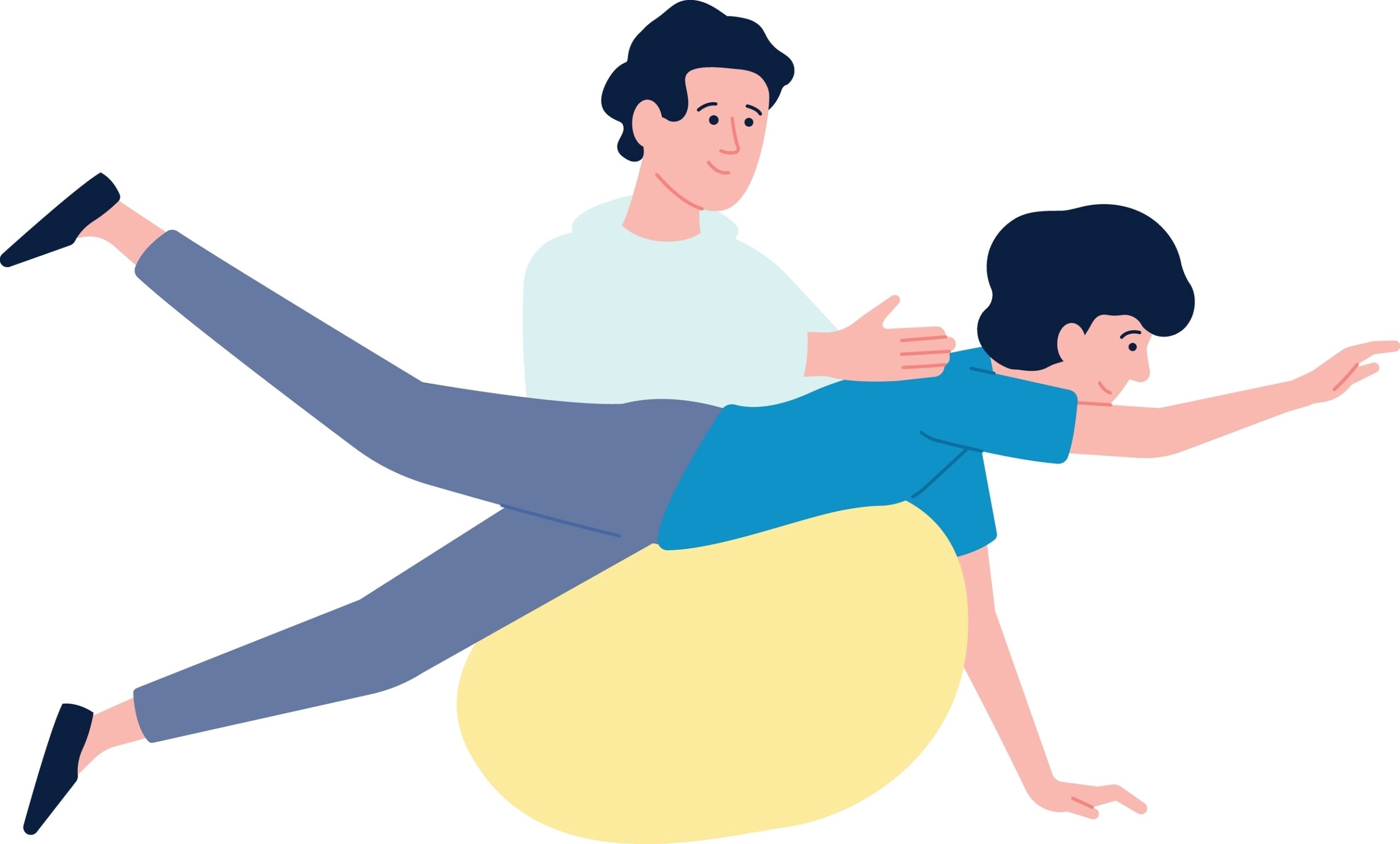What is Physical Therapy for Autism
Physical therapy for autism is a supportive, evidence-based approach to improving motor skills, coordination, and daily functioning in children with autism spectrum disorder (ASD). It’s designed to address both physical challenges and promote independence.
Why is it Important?
Many children with autism experience delays in gross and fine motor development. These challenges can affect balance, posture, strength, and coordination. Physical therapy helps bridge these gaps through tailored interventions, making everyday activities more manageable and enjoyable.
Key Benefits and Goals
The main goals of physical therapy for autism include:
- Enhancing muscle strength and coordination
- Improving balance and motor planning
- Promoting confidence and body awareness
- Supporting greater independence in daily routines
Who Can Benefit?
Children across the autism spectrum can benefit, especially those with noticeable motor delays or difficulties in physical activities. Physical therapy is also helpful for children who struggle with posture, gait, or sensory-related motor issues such as autism spinning or hand flapping.
Physical therapy for children with autism differs from general pediatric PT in that therapists often incorporate sensory integration techniques, play-based routines, and communication supports that are specifically tailored to neurodiverse needs. This specialization ensures that therapeutic sessions are both effective and engaging.
Common Motor Challenges in Autism
Children with autism often experience challenges such as poor balance, delayed crawling or walking, toe-walking, and clumsiness. These issues can make it harder to participate in play, sports, or classroom activities.
In addition, many autistic children face sensory-motor integration issues – meaning they struggle to process sensory input and translate it into coordinated movement. This can affect how they interact with their environment, manage transitions, or participate in structured physical tasks. These challenges often influence a child’s readiness for school, group play, or community involvement.
How Physical Therapy Improves Motor Skills
Therapists design activities that target specific muscle groups and skills. This might include:
- Obstacle courses for motor planning
- Balance beams for core stability
- Jumping, climbing, or resistance play to build strength
These sessions are structured and individualized to each child’s unique profile.
Occupational Therapy for Autism vs Physical Therapy
While both therapies are essential, they target different needs. Occupational therapy for autism focuses on fine motor skills, sensory integration, and self-care activities. Physical therapy emphasizes gross motor skills, strength, and mobility. Together, they offer a comprehensive support system for children with ASD.
Exercises and Activities Used in Physical Therapy for Autism
Types of Exercises (Coordination, Balance, Strength)
Common exercises include:
- Core strengthening activities like sit-ups and planks
- Balance drills on therapy balls or balance boards
- Coordination games that combine movement with visual tracking
Therapeutic Play and Structured Activities
Physical therapists often use structured games to engage children. Activities like obstacle courses, dance routines, and ball games promote engagement and learning while developing motor control. These exercises also help manage autistic stimming behaviors by offering alternative physical outlets.
Key Benefits of Physical Therapy
Physical therapy offers several lasting benefits:
- Greater physical confidence
- Reduced risk of injury
- Improved participation in school and peer activities
- More regulated sensory responses, including reduced finger flicking
It also supports emotional well-being by allowing children to move more freely and confidently in their environments.
How to Access Physical Therapy for Autism
Finding Qualified Therapists
Look for licensed pediatric physical therapists with experience in autism. Recommendations from your pediatrician, developmental specialist, or ABA provider are a great starting point.
Parents can also search through national directories such as APTA (American Physical Therapy Association) or contact local autism resource centers for therapist referrals.
Insurance
Does insurance cover aba therapy as it relates to physical therapy? Many insurance plans cover physical therapy when deemed medically necessary. Families should ask their provider about documentation and pre-authorization requirements.
In some states, autism-specific insurance mandates require coverage for therapies like PT when part of an autism treatment plan. Check with your state’s Department of Insurance or your provider’s autism care coordinator.
Funding Options
In addition to insurance, early intervention programs, school-based services, and Medicaid waivers can help cover costs.
Children under age 3 may qualify for free physical therapy through state-funded early intervention programs. Older children may access services via an IEP (Individualized Education Program) through their school district if physical delays impact learning or classroom participation.
Evidence and Research on Physical Therapy for Autism
Latest Studies and Findings
Recent studies show that physical therapy significantly improves balance, coordination, and participation in daily life among children with ASD. Evidence also supports its role in improving posture and reducing stereotyped behaviors.
For example, a 2021 study in the Journal of Autism and Developmental Disorders found that children who received 12 weeks of physical therapy targeting gross motor skills demonstrated measurable improvements in gait, posture, and peer interaction.
Additionally, the American Physical Therapy Association (APTA) emphasizes the importance of early motor intervention as a predictor of long-term developmental outcomes.
Success Stories
Many families report progress in areas such as walking stability, climbing stairs, or catching a ball after just a few months of therapy. These successes often lead to greater self-esteem and engagement in group activities. Achieving these motor milestones also supports emotional resilience and growing independence, which can help children participate more fully in both home and community life.
How to Apply for ABA Therapy at Home
Families interested in ABA services for autism can learn more about aba therapy at home, which complements physical and occupational therapies by reinforcing new behaviors and skills in a familiar setting.
Find a Location Near You:
FAQs
When should physical therapy for autism start?
As early as developmental delays are noticed. Physical therapy for early intervention asd yields the best outcomes.
How long does physical therapy for autism usually last?
It depends on individual needs, but sessions often continue for several months to a year.
Can adults with autism benefit?
Yes. While less common, adults can also benefit from physical therapy to improve posture, coordination, and mobility.
